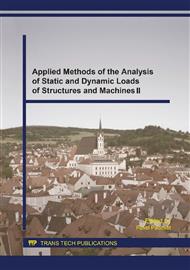p.215
p.219
p.223
p.227
p.231
p.235
p.239
p.243
p.247
Pulse Method Used for Non-Destructive Assessment of Glued Laminated Timber Beams
Abstract:
This text is focused on GLULAM (glued laminated timber) beams and determination of their properties. This text is mainly focused just on part of more complex research of glued laminated timber beams. This text is focused on pulse method, which is used to determine the dynamic modulus of elasticity of GLULAM beams. This text will describe how the pulse method works, with basic description, describes the tested material and compare the results of testing. In the conclusion we discuss the results, make conclusions and describe the way of our further research of glued laminated timber beams.
Info:
Periodical:
Pages:
231-234
Citation:
Online since:
February 2016
Authors:
Price:
Сopyright:
© 2016 Trans Tech Publications Ltd. All Rights Reserved
Share:
Citation:


